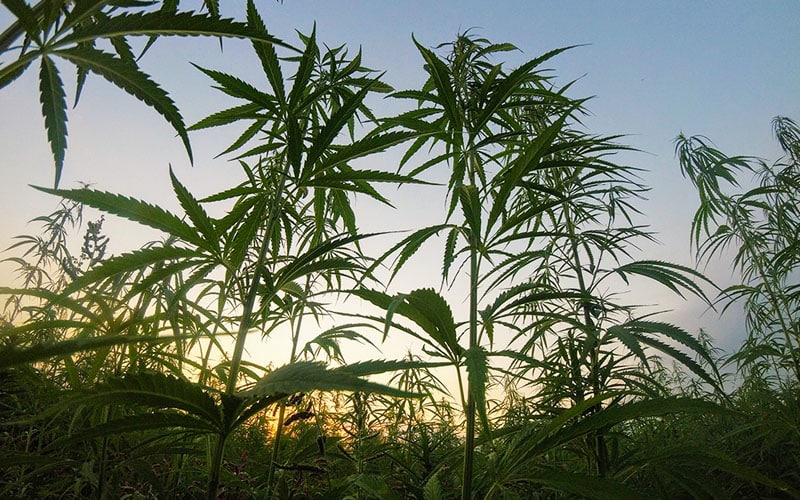Many people who tried cannabis in the 60s or 70s will tell you that cannabis back then is different than what’s in a dispensary now. And they are right – from higher potency among flower, to the variety of products available today, there are real differences! However, one of those differences has to do with the cannabis plant itself. The flower and trim people were smoking 50 years ago may have been a landrace cannabis strain.
Landrace Cannabis Strains
Just how farmers breed apples to create new varieties with special characteristics from flavor profile to mouth feel, cannabis growers have bred and cross-bred cannabis over the years. However, it wasn’t until the late 1970s that growers began intentionally doing so. According to Leafly, breeders were eventually able to “produce offspring that consistently carried the desired characteristics from each type, and perhaps even more importantly, avoid unwanted characteristics that could weaken the plant’s health and production.”
Now, botanists can actually trace every cannabis strain we know of today back to a single plant variety developed in Afghanistan and Pakistan thousands of years ago. Crazy, right? In other words, these were basically the original wild species.
From there, humans took cannabis wherever they went. The plant spread to China, Russia, South America, Africa, the Caribbean, etc. A landrace cannabis strain is one of these original strains. In other words, they were basically pure sativas and pure indicas. Frequently, they’re named after the region they were developed in. Durban Poison, Acapulco Gold, Afghani, Panama Red, Hindu Kush, etc.
How Did Landrace Cannabis Strains Evolve?
Landrace cannabis strains have not been crossbred with other varieties of cannabis – they are indigenous to a certain part of the world. Ok. So how did the original wild species develop into these different strains with differing characteristics? Well, basically each location had its own environment, temperatures, soil chemistry, growing conditions, etc.
When you take these landrace cannabis strains out of the indigenous environment and bring them to a completely different location, you may get further mutations (so to speak). Additionally, it can develop slightly different profiles. As a result, the plant adapted to those conditions. Furthermore, the cannabinoids, terpene profiles, looks, smells, strengths, and characteristics of the wild species changed with that adaptation.
During that transition from the indigenous environment to new growing conditions, some of the characteristics of the original plant will be lost. To get those characteristics back, you’d have to return the plant to its native environment. With the transplantation and resulting varieties, you get strain names paying homage to their heritage as descendants of those landrace strains – for example, “Kandy Kush,” or “Durban Thai.”
Where Are They Now?
So what happened to these landrace strains and why are so many strains now a hybrid rather than a pure indica or sativa? Well starting in the last 150 years or so, but especially in the past 50 years, cannabis growers began combining these landrace strains – crossbreeding them. The reasons for this could be practical such as wanting to grow a strain in a particular climate that differs from the native environment or wanting to avoid characteristics that could lead to poor health of the plant. Or they could be experimental – wanting to emphasize a particular flavor profile, increase the potency, or create a new kind of effect.
The result? Hybrid strains that dominate the market and that we know and love today. While you can still find some landrace strains today, they aren’t grown on a large scale and they tend to be less potent than the strains widely available at local dispensaries today. You might compare it to the Hershey’s chocolate bar from your childhood vs. the exotic chocolate filling grocery store shelves today.
Landrace strains are not “better” – they are different. They’re the originals. The OGs. They may not be for everyone. You’ll just have to see for yourself. However, we recommend you give them a try if you ever have the chance. After all, we owe these landrace cannabis strains a whole lot. And if it weren’t for them, we may not have the thriving industry we have today.
About OMG THC
We’re homegrown in Las Vegas, Nevada. We embrace niches others in the Cannabis market ignore or reject. Vegan? Diabetic? Gourmet cook? Old-school hash connoisseur? Looking for a specific ratio of CBD and THC in your products? You got it! We’ve got you covered!
Additionally, we care about quality and the effects our products have on people’s lives & health. OMG THC use only CO2 and ethanol extraction methods. We NEVER use butane or other petrochemicals to extract our oils. We want our products to be easy on the body and safe for our team to make.
Our products are simple and they are great. From the cannabis oils, we use to the packaging and the varieties of our products. Finally, and best of all, our edibles are damn delicious! In other words, if we wouldn’t want to eat them, we aren’t going to sell them to anyone else. We NEVER cut our concentrates with anything – period! EVER! We use top of the line C-Cell hardware – always. We ensure quality and purity.
For Adult Use Only
OMG THC products are intended for use by and available to adults 21+ and over. Keep our products out of reach of children and pets. Be smart. Be Vigilant. Finally, enjoy our products responsibly and keep everyone safe.
As always, feel free to Contact OMG THC with any questions or comments you might have. We’re here for you and we’re responsive to your needs. If you’d like to locate OMG THC products, check out our dispensaries list. You can also find out more about OMG THC on Leafly.


